8 minutes reading time
Following our earlier article, “5 big trends in sustainable investing”, we present a two-part discussion on energy storage. Our first part on deep storage solutions is available here. This second article examines the critical role of batteries in a rapidly decarbonising energy sector.
A rechargeable battery stores electricity as chemical energy (charged) and then coverts that stored energy back to electricity as a result of a chemical reaction (discharge). Batteries have three vital components:
- An anode, which stores charged molecules and releases electrons when the battery is being used.
- A cathode, which stores uncharged molecules and receives electrons when the battery is being charged.
- An electrolyte, which allows molecules to move from one side of the battery to the other.
Batteries vary in the chemicals used, which gives them different properties including cost, capacity, energy density and lifespan.
Battery energy storage system (BESS) capacity is measured in megawatt hours (MWh). For reference, 1 MWh could power an average Australian home for 50 days, 50 homes for one day, or 1,200 homes for one hour.
In this article we look at different battery technologies, as well as deployment options including commercial scale, community batteries, and behind-the-meter storage.
Lithium-ion batteries
Early lithium-ion (Li-ion) battery development was conducted on behalf of NASA. However, the credit for the development of the modern commercial Li-ion battery is generally attributed to US physicist John B Goodenough and Koichi Mizushima, a Japanese research scientist who worked for Toshiba. The two developed the first lithium cobalt oxide battery in the 1980s1.
Because of its high energy density, the lithium-ion battery has become the dominant battery type used in electric vehicles (EVs)2, as well as being used for residential and commercial storage applications.
Australia is familiar with the use of Li-ion batteries for commercial scale energy storage. Constructed in 2017, the Hornsdale Power Reserve (HPR) in South Australia was the world’s first ‘big battery’ with a capacity of 129 MWh, expanded to 194 MWh in 2020. Today it is dwarfed by the Vista Moss Landing Battery in California (2,270 MWh) and the planned CEP Kurri Kurri battery which may end up with a capacity of 4,800 MWh3 if all stages are completed.
Hornsdale Power Reserve
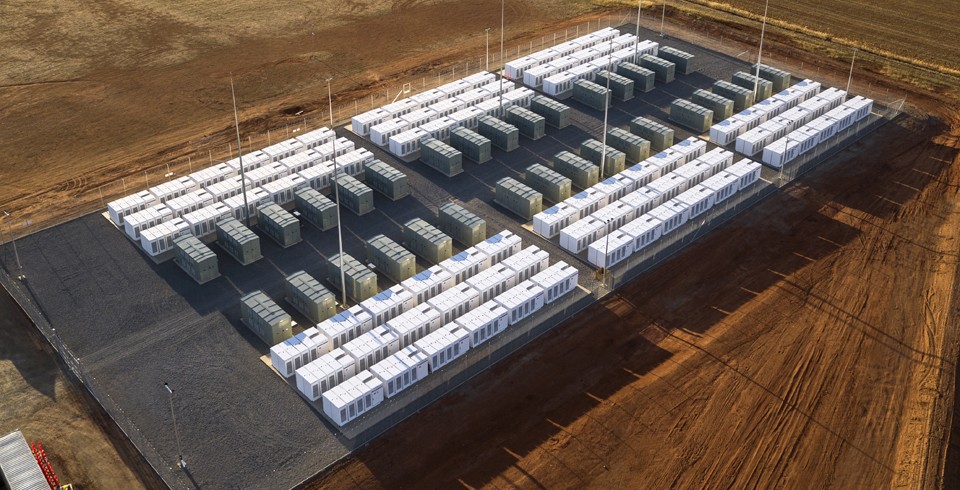
Source: Energy Source & Distribution News
The HPR has been an unambiguous success. Owned by Neoen and built by Tesla, in its first two years of operation it is credited with saving South Australian consumers over $150 million. It enabled the build out of low-cost wind and solar without impacting grid stability. Between 2017 and 2021 rooftop solar in South Australia tripled. Despite this, the state has the cheapest and most reliable electricity among Australia’s National Electricity Market (NEM) regions4.
The major advantage of Li-ion batteries over pumped-hydro energy storage (PHES) is its ability to provide primary response – correcting for frequency and voltage changes that are a characteristic of wind and solar generation. Where Li-ion batteries are typically limited is in capacity. The HPR has a power rating of 150MW but can only store 194MWh. At continuous output it could discharge for only 77 minutes.
The second problem of Li-ion batteries is life expectancy. For example, the Tesla Powerpack units used in the HPR have a 15-year lifespan and the new Megapacks have a 20-year lifespan. While considerable, this is substantially less than the 50 years plus typical of PHES projects.
Leaders in Li-ion battery manufacturing include Tesla, Contemporary Amperex Technology Co (CATL), LG Energy Solutions, Samsung SDI and Panasonic.
Redox flow batteries
A reduction and oxidation (redox) flow battery produces electricity by mixing two chemicals that are dissolved in liquids with a membrane separating them. Electrons flow through the membrane, creating an electric current, while both liquids circulate through the battery. Flow batteries have three main advantages relative to Li-ion batteries.
- Energy storage is independent of power and hence flow batteries can easily scale, additional storage can be created by simply adding bigger or additional storage tanks. For example, New Jersey based Invinity Energy Systems manufactures a modular VRFB with output of 10 to 36 hours5.
- Flow batteries can cycle without the electrolyte degrading, meaning they have a significantly longer lifespan6.
- While less energy dense than Li-ion batteries, flow batteries have a levelised cost of storage (LCOS) around 35% cheaper, making them an attractive solution for stationary grid-scale applications7.
Invinity Energy Systems VRFB Modules, Oxford UK.
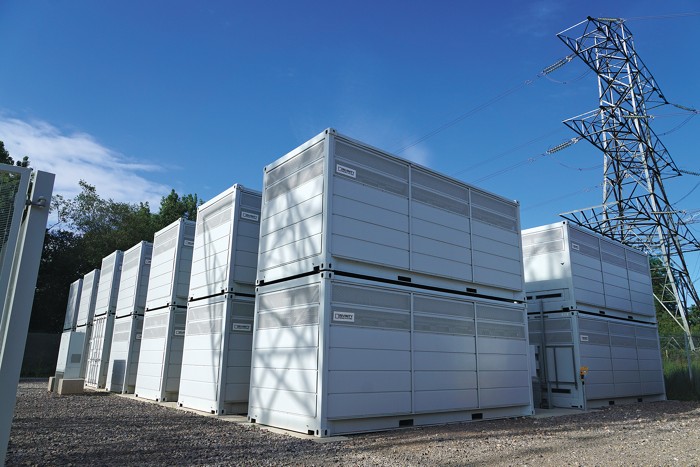
Source: Chemical & Engineering News
While flow batteries were first patented in 18798, it was the work of Australian chemical engineer Maria Skyllas-Kazacos at the University of New South Wales in the 1980s that paved the way for the development of commercial Vanadium Redox Flow Batteries (VRFB).
Currently the largest VRFB is in operation is in the city of Dalian, China. The Dalian Flow Battery Energy Storage Peak-shaving Power Station is a 400MWh/100 MW battery.
Storage tanks at the Dalian Flow Battery Energy Storage Peak-shaving Power Station
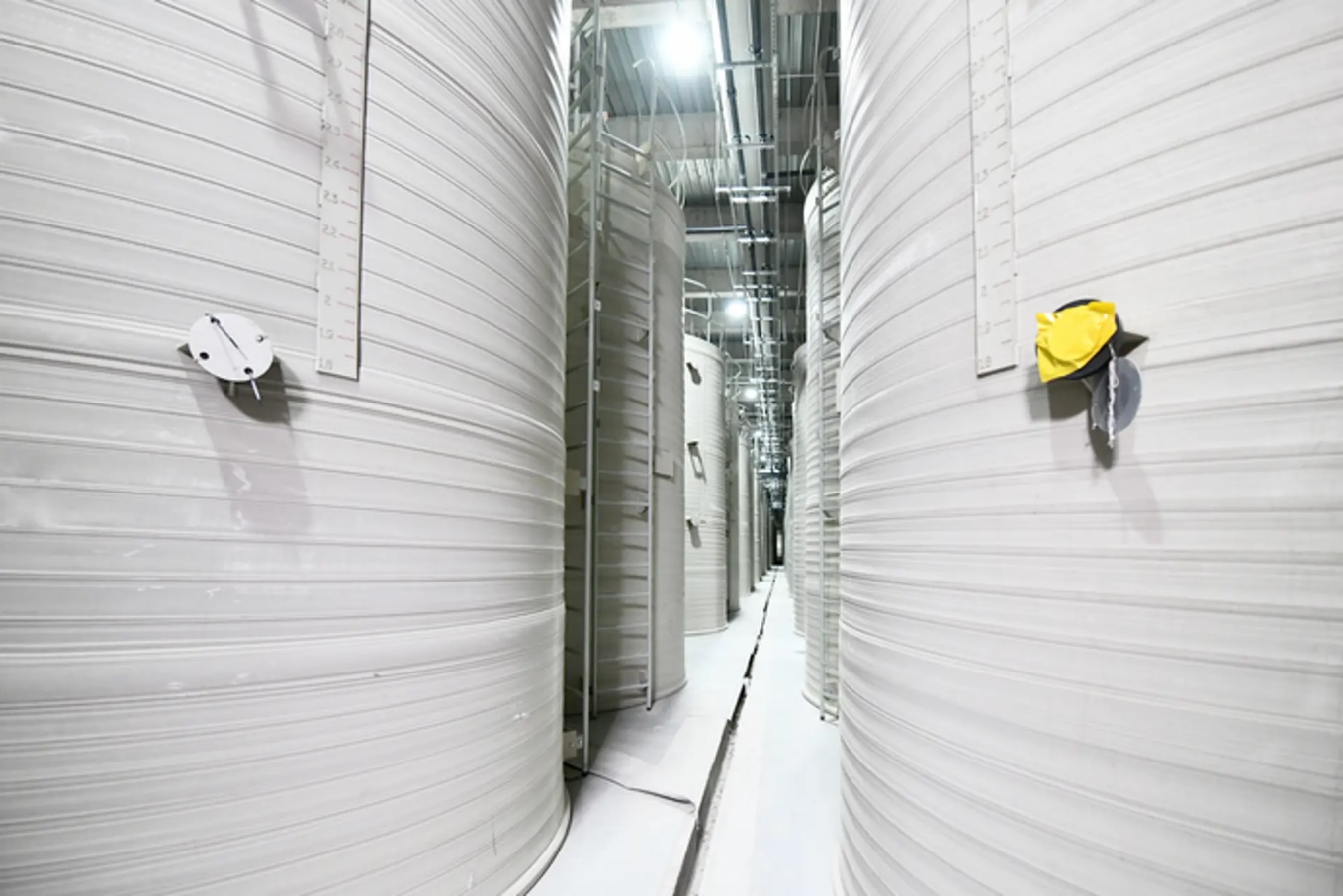
Source: New Atlas
While the number of VRFBs currently installed is small relative to Li-ion battery storage, production is rapidly scaling as costs come down and industry standards are adopted. According to a report published by Trade & Industry Policy Strategy in 2022, the global market for vanadium batteries is anticipated to experience a compound annual growth rate of 6-7% from 2021 to 20319. Companies currently manufacturing VRFBs include H2 Inc., VRB Energy, E22 Energy Storage Solutions, Invinity Energy Systems, Sumitomo, and Enerox GmbH (CellCube).
Commercial scale storage
Large BESS installations are important for grid stability as the proportion of electricity generated from variable wind and solar increases. Batteries provide primary response – the ability to correct continuous and sudden frequency and voltage changes across the network, as well as secondary response – the ability to correct imbalances between demand and supply. While currently far smaller than pumped-storage hydropower capacity, grid-scale batteries are projected to account for the majority of storage growth in coming years. Total installed grid-scale battery storage capacity increased by 52 GW in 2023, an increase of 115% on 2022. Taiwan based EnergyTrends predicts installations will increase to 71 GW/167GWh in 2024, noting that despite Inflation Reduction Act incentives, grid connection delays in the US resulting from aging transmission infrastructure are not helping the rollout.
Community batteries
A community battery is a type of energy storage that can increase the accessibility and availability of renewable energy for a local neighbourhood or multi-residential development. Community batteries range from 100 kWh to five MWh in capacity, enough to power a small neighbourhood for a few hours during peak demand, typically in the evening. A particular benefit of community batteries is continuity of supply, particularly in rural and remote communities during periods of extreme weather that can impact transmission infrastructure.
Community batteries have been shown to substantially reduce the cost of electricity for participating households. Australia’s first community battery at Alkimos Beach in Perth’s northern suburbs is credited with saving participating residents an average of $136.70 a year per household10.
Ausgrid Community Battery – Kendall Reserve, Cabarita
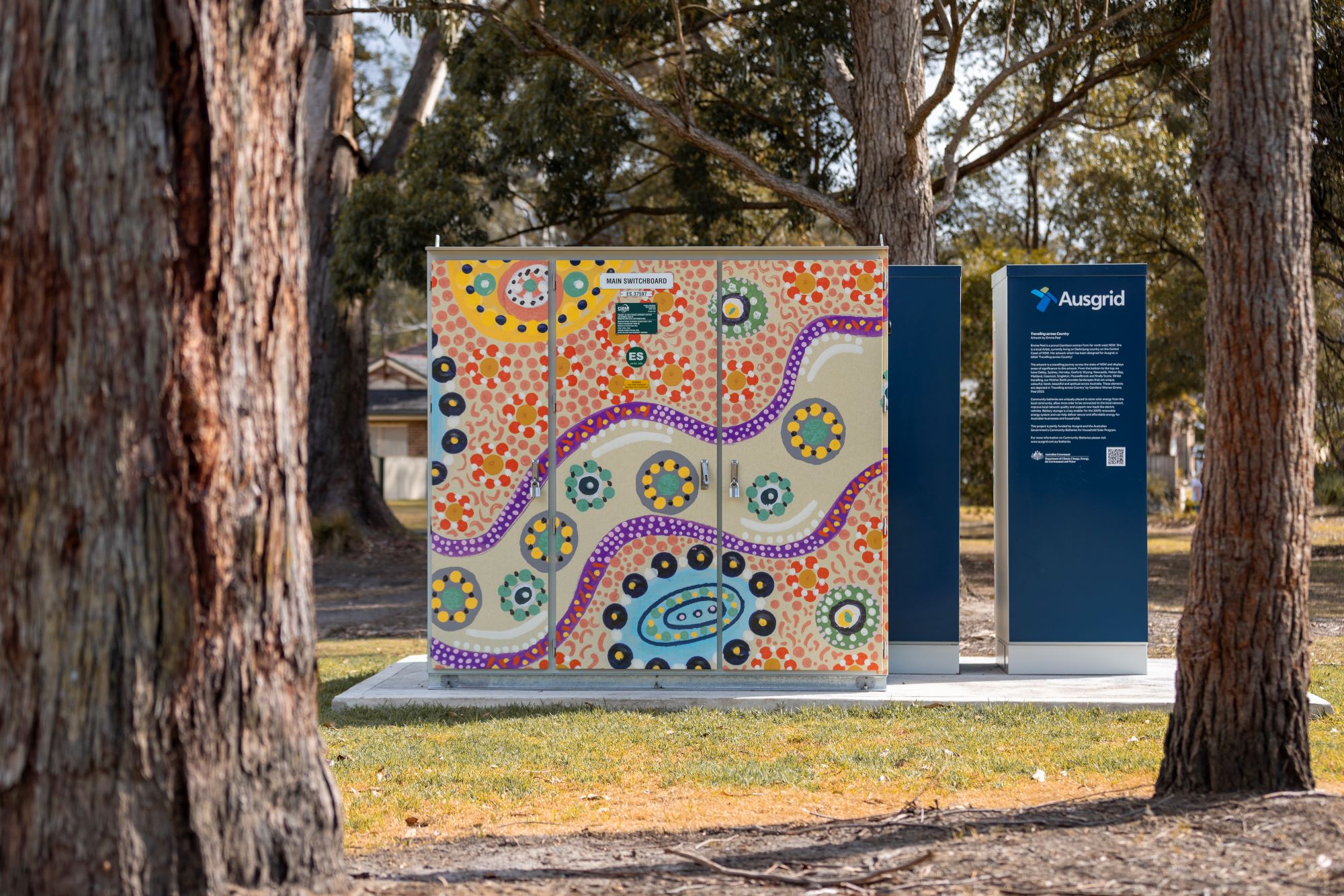
Source: Ausgrid. Artist Sharon Smith
In 2023, the Federal Government and Ausgrid announced plans to deploy 400 community batteries throughout Australia, with the first battery installed in Cabarita in Sydney in September 202311.
Behind-the-Meter household batteries
Home battery storage, sometimes referred to as solar battery storage, typically stores surplus electricity from rooftop solar for use when it is dark or cloudy. Systems have the additional benefit of providing energy security in the event of grid outages. Household batteries typically use lithium iron phosphate chemistry (LiFePO4 or LFP) which is relatively low cost with long life cycles. LFP batteries are cobalt-free. The Tesla Powerwall 2 uses Lithium Manganese Cobalt (LNMC) chemistry, which is lighter and more energy dense, but comes at a higher cost.
Tesla Powerwall 3
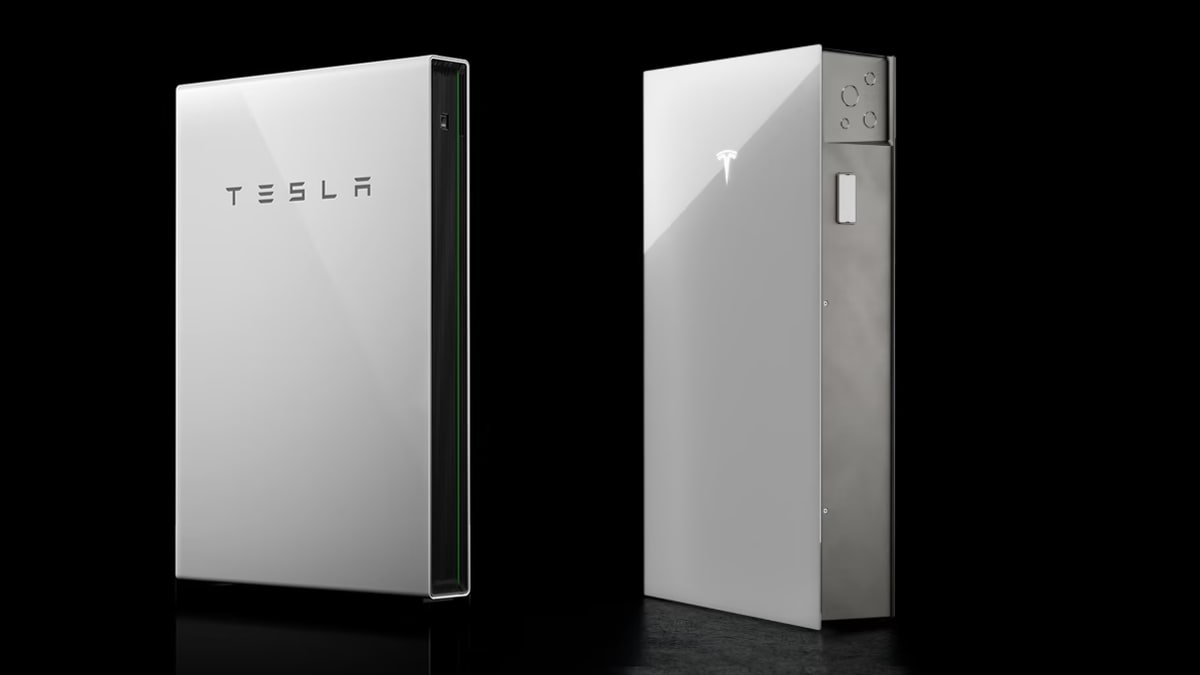
Source: Tesla
Home battery systems in Australia generally cost between $8,750 and $15,500 dollars, depending on the manufacturer and battery type. At that price, and in the absence of government subsidies, the value of a residential battery in Australia is marginal according to Finn Peacock, the founder of SolarQuotes.com12. However, in March 2024, the Queensland Government announced rebates of up to $4,000 rebates on batteries over 6 kWh13, making home batteries far more affordable for eligible households.
The largest manufacturers of household batteries include Tesla, German company Sonnen, and Chinese companies, BYD, Contemporary Amperex Technology Co. (CATL), ESS Tech (Alpha ESS), EVE Energy Co and Sungrow Power Supply Co.
Conclusion
Batteries are by far the fastest growing segment of the energy market, facing rapid scaling in production and rapidly falling costs. In the near-term, supply of stationary storage batteries has outstripped demand, which is leading to downward pressure on pricing14. Longer term, demand will continue to grow with the increasingly rapid decarbonisation of our electricity grid, and pricing will recover as excess capacity is absorbed. It is likely flow batteries will exceed Li-ion for commercial scale stationary storage applications, while Li-ion will dominate residential applications as they are becoming increasingly affordable.
- https://onlinelibrary.wiley.com/doi/10.1002/adma.201800561 ↑
- https://www.betashares.com.au/insights/spotlight-on-lithium/ ↑
- https://www.rechargenews.com/technology/worlds-first-gw-scale-battery-project-unveiled-in-australia-in-snub-to-gas-fixated-government/2-1-958227 ↑
- https://aemo.com.au/-/media/files/electricity/nem/planning_and_forecasting/sa_advisory/2021/2021-south-australian-electricity-report.pdf?la=en ↑
- https://invinity.com/vanadium-flow-batteries/ ↑
- https://www.sciencedirect.com/science/article/pii/S2352484719305967#:~:text=The%20battery%20and%20the%20vanadium,and%20over%20100%20years%2C%20respectively. ↑
- https://cen.acs.org/materials/energy-storage/Flow-batteries-forgotten-energy-storage/101/i25 ↑
- https://www.upsbatterycenter.com/blog/world-first-flow-battery/ ↑
- https://www.tips.org.za/policy-briefs/item/4637-a-review-of-vanadium-redox-flow-battery-vrfb-market-demand-and-costs ↑
- https://onestepoffthegrid.com.au/australia-first-community-battery-trial-delivers-bill-savings-and-some-key-lessons/ ↑
- https://www.dcceew.gov.au/about/news/switching-on-community-batteries#:~:text=Minister%20for%20Climate%20Change%20and,electricity%20with%20around%20150%20households. ↑
- https://www.solarquotes.com.au/arebatteriesworthit.html ↑
- https://www.qld.gov.au/housing/home-modifications-energy-savings/battery-booster-program ↑
- https://about.bnef.com/blog/energy-storage-10-things-to-watch-in-2024/ ↑
